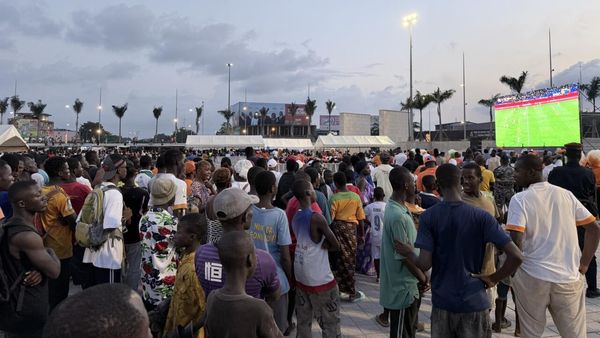
Content warning: this article discusses suicide.
Last week the United Nations released its annual World Happiness Report. Predictably, Finland was in the top spot, where it’s been since 2018. Other northern European countries rounded out the list, alongside Israel and New Zealand. Australia came in 12th — having peaked at No. 9 in 2017, we’ve hovered just outside the top 10 since.
Some have questioned these rankings, however. Former World Bank economist Branko Milanović wondered aloud how Finland’s supposed joy squares with also having one of the world’s highest anti-depressant usage rates, and others have cited the country’s higher-than-average rates of suicide. There have also been many efforts to undermine the report’s credibility since it launched in 2013.
Cynicism towards country rankings is understandable; many such listicles, such as the “most liveable cities” rankings, are based on questionable methods. But while the World Happiness Report has its limitations, it cannot be so easily dismissed.
The Nordic countries’ superior life satisfaction is real and related to their distinct economic model. And Australia’s inability to close the quality-of-life gap despite being ranked the wealthiest nation on earth last year speaks to real policy failures that we must reckon with.
An evidence-based vibe check?
The report’s name is a bit of a misnomer. It asks respondents “to evaluate their current life as a whole using the image of a ladder, with the best possible life for them as a 10 and worst possible as a 0” — more life satisfaction than happiness.
People receiving treatment for depression can certainly be satisfied with their lives. Indeed, some have argued that Scandinavian countries’ high rates of antidepressant use could be the result of better healthcare access, showing robust health systems meeting public needs.
Underlying rates of depression were “relatively moderate or low” in Nordic countries in the mid-2010s. They’ve increased since, particularly during COVID, but that’s happened everywhere.
Nordic countries can also be bitterly cold with reduced sunlight, which increases the risk of seasonal affective disorder. But while very cold weather can increase rates of mental health issues, so can very hot weather, and the reports find weather has little correlation with overall life satisfaction scores. Neither does population size or immigration rates, another common conservative explanation for Nordic success.
As for suicide, historically high Scandinavian rates have decreased significantly thanks to concerted government campaigns, but Finland remains above average. The report’s editor, Professor John F Helliwell, explains this by pointing to low levels of religion, which are “very important in stopping suicides, but not so important in producing happiness with life”.
They also have high divorce rates, which is “bad for both, but it’s worse for suicides than it is for life evaluations”. Some of the secular freedoms enabling the Nordics to score highly on “freedom to make life choices” also present acute mental health challenges for some individuals.
The pursuit of public spending
If the mental health rebuttal doesn’t hold, what’s the Finnish secret sauce? It’s not, as many media outlets have insisted for years, its “hygge” culture of cosiness and warmth.
The report finds six key variables that explain more than three-quarters of the variation in national happiness scores: GDP per capita; social support; healthy life expectancy; freedom to make life choices; generosity; freedom from corruption.
Another important indicator is “happiness equality”. It’s more likely that countries whose individuals have similar responses to one another will score higher on happiness overall (excluding countries whose citizens score themselves as similarly miserable, like Afghanistan). Nordic countries do well on this measure, mirroring their relative equality of economic outcomes.

Nordic countries score particularly highly on social support and freedom. This year’s report focuses on the significant difference made by “state effectiveness”, which comprises the ability to raise money and deliver services, the rule of law, and the avoidance of civil war and repression.
It’s in the former category where Nordic and Australian divergence is best explained. Nordic countries are famous for “cradle-to-grave” welfare states, including generous child payments, unemployment insurance, pensions and universal services such as healthcare and education. These shield citizens from risks such as job loss and illness, leaving them freer to make choices such as changing careers and having larger families.
Australia’s welfare state is comparatively paltry and patchy, leaving citizens more at the mercy of external forces. Want to have another kid? Our child benefits are mediocre and childcare is expensive. Want to make a risky career move like retraining or starting a business? Fail and you’ll fall back on below-poverty level payments. Getting too old for work? You’d better not have taken significant time out of the workforce throughout your career, or else your super balance won’t get you by, and the pension is less than generous.
The demands on public coffers for such support are only rising, but Australia isn’t raising nearly enough revenue to deliver. And that’s before the stage three tax cuts kick in.
The Nordics aren’t utopias — indeed, Finland may soon boot out its young, female-led, left-leaning government. But for a nation that vaunts our lifestyle and prides itself on podium finishes, Australia’s Finnish drubbing should leave us unhappy indeed.
For anyone seeking help, Lifeline is on 13 11 14 and Beyond Blue is 1300 22 4636. In an emergency, call 000.







